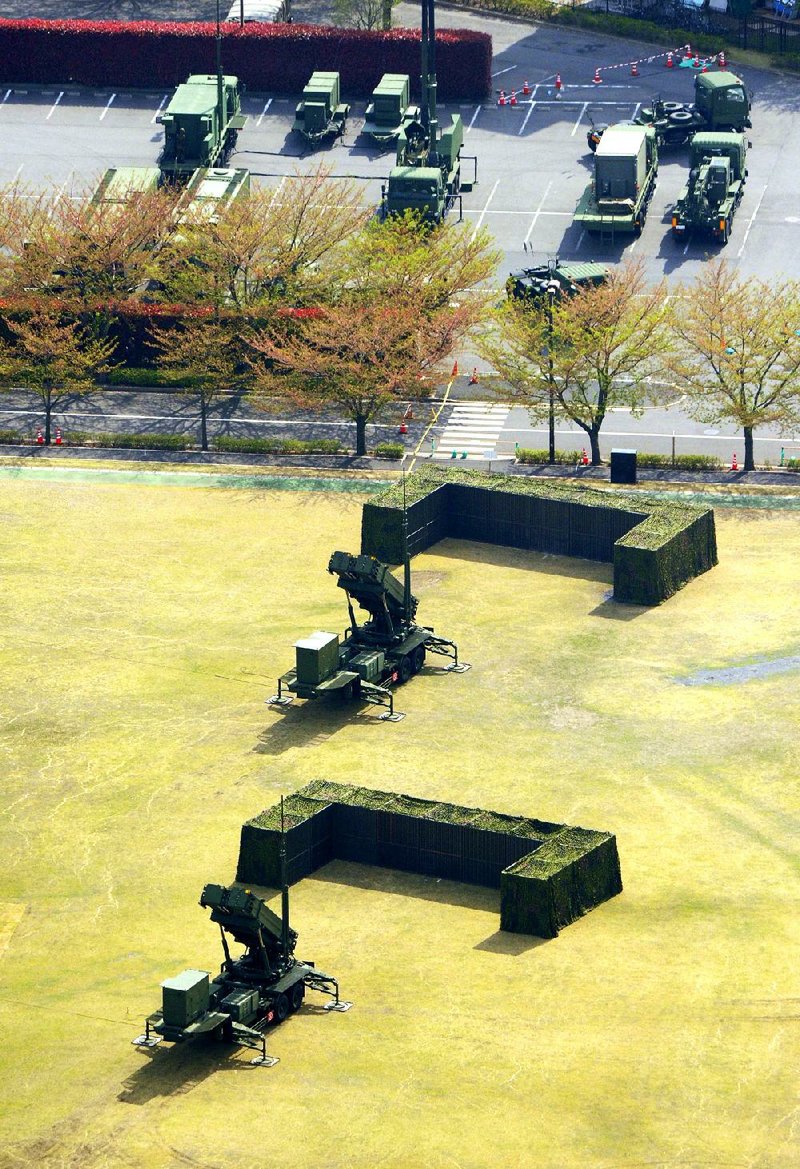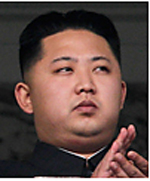SEOUL, South Korea - North Korea warned Tuesday that foreigners in South Korea should look for shelter or consider evacuating because the Korean Peninsula was on the brink of nuclear war. But the South Korean president, Park Geun-hye, said she remained determined not to succumb to the North’s efforts to escalate tensions to extract concessions from the South.
The warning by the North came after a similar advisory last week in which it told foreign embassies in the North Korean capital, Pyongyang, to devise evacuation plans.
“The situation on the Korean Peninsula is inching close to a thermonuclear war due to the evermore undisguised hostile actions of the United States and the South Korean puppet warmongers,” the Korea Asia-Pacific Peace Committee, a North Korean state agency, said in a statement Tuesday. “It does not want to see foreigners in South Korea fall victim to the war.”
In South Korea, where people have long grown used to North Korean bluster or learned to shut themselves off from a situation out of their control, there were few if any signs of anxiety after the warning. The U.S. Embassy in Seoul said the State Department’s travel notice on South Korea remained unchanged Tuesday.
“Despite current political tensions with North Korea there is no specific information to suggest there are imminent threats to U.S. citizens or facilities in the Republic of Korea,” said the travel message, which was last updated Friday, using the official name of South Korea. “The embassy has not changed its security posture, and we have not recommended that U.S. citizens who reside in, or plan to visit, the Republic of Korea take special security precautions at this time.”
The Korea Tourism Organization said the latest torrent of North Korean threats has so far had little effect ontourism, with the number of Chinese tourists doubling during a vacation week last week, said Lee Kwang-soo, a spokesman. Still, it was taking precautionary measures by reaching out to foreign tourist agencies to inform them that it was safe to visit South Korea, he said.
“This is not the first time North Korea acts like this,” said Song Hyun-seok, an official at the South Korean office of the Philippine Department of Tourism. Gloria Lee, a spokesman at Lotte Hotel, one of South Korea’s biggest hotel chains, reported a 30 percent drop in Japanese guests this year but assigned the problem not to North Korea but to the weakening Japanese yen and fraying political ties between South Korea and Japan.
But DMZ Tour Corp., a company that specializes in taking tourists to the heavily militarized border with North Korea to experience one of the world’s last reminders of Cold War tensions, has seen its business shrink in recent weeks.
“We have foreign tourists calling us to ask whether it’s safe to go to the border,” said Yoo Jae-sung, a company official who declined to reveal how many tourists his company lost to the tensions. “Yesterday, a group of Australian tourists had a vote among themselves after agreeing that if any one of them was afraid to go to the border, they would cancel the trip. They went.”
South Korean officials and analysts said North Korea was extremely unlikely to start awar. Rather, they said, its warning was psychological warfare aimed at heightening a sense of crisis to rattle investors’ confidence in the South’s globalized economy and force Washington and its allies to return to the negotiating table. In that vein, the North may launch a medium-range missile this week, they said.
On Tuesday, Park responded to North Korea’s escalating pressure tactics by vowing to break the pattern of rewarding North Korea for its bad behavior with compromises and economic assistance.
“How long are we going to repeat this vicious cycle where the North Koreans create tensions and we give them compromises and aid?” she asked a Cabinet meeting called a day after the North pulled out more than 50,000 workers from the Kaesong industrial park, which has been jointly run with the South.
The North Korean withdrawal of workers from Kaesong on Monday effectively shuttered the last remaining example of inter-Korean cooperation, one that had survived for eight years despitemilitary tensions on the divided Korean Peninsula. North Korea said the Kaesong Industrial Complex, in the North Korean town of the same name, can reopen only if the South changes its “attitude,” according to officials.
“North Korea must stop its wrong behavior and make a right choice for the future of the Korean nation,” Park said, accusing the North of flouting inter-Korean agreements to protect investments. “If the North breaks international norms and promises like this, which country and which business will invest in the North?”
Since it produced its first products in late 2004, the Kaesong factory park, just north of the western edge of the inter-Korean border, has shown how the two Koreas could use economic cooperation to overcome decades of political hostilities, signaling hope foran eventual reunification. The two Koreas breached their heavily armed border, clearing minefields and pushing back military encampments, to build a cross-border road and rail line that linked Kaesong and Seoul.
Since then, hundreds of South Koreans and trucks had rumbled through a border crossing each day, shipping out textiles and other labor-intensive goods from 123 South Korean factories in Kaesong made with low-cost North Korean labor.
North Korea said it was forced to consider shutting down Kaesong because of tensions heightened by routine joint U.S.-South Korean military exercises and U.N. sanctions imposed for its Feb. 12 nuclear test.
Analysts and officials in South Korea have said the young and relatively inexperienced North Korean leader,Kim Jong Un, was exploiting the current situation to bolster his standing with the military, divert attention from domestic economic failures and make the outside world used to his country’s status as a nuclear weapons state.
North Korea’s ceaseless efforts to ratchet up tensions have magnified the challenge faced by the new South Korean leader.
Park, South Korea’s first female president, campaigned for her December election with a North Korea policy that, in essence, copies Washington’s “strategic patience” approach: If the North wins the trust of the South and the United States - by de-escalating tensions and expressing a seriousness to negotiate away its nuclear weapons - it will get the dialogue, respect and economic assistance it desperately needs, but provocations will be met with more sanctionsand isolation.
As part of a trust-building process, Park offered to unlink humanitarian aid from political tensions. Her approach was seen as more flexible than her predecessor and fellow conservative, Lee Myung-bak. But it fell far short of the North Korean demand for the lifting of the trade embargo South Korea had imposed in 2010 when it blamed the North for the sinking of a South Korean navy ship that killed 46 sailors. The North denied responsibility.
In December, North Korea launched a satellite into space on a rocket that Washingtonand others called a cover for a long-range missile test. The North followed that with an underground nuclear test in February, a step toward mastering the technology for mounting an atomic bomb on a missile.
Tightened U.N. sanctions that followed drew the ire of North Korea, which accused Washington and Seoul of leading the campaign against it. Annual U.S.-South Korean military drills south of the border have further incensed Pyongyang, which sees them as practice for an invasion.
Last week, Kim enshrined the pursuit of nuclear weapons - which the North characterizes as a defense against the U.S. - as a national goal, along with improving the economy. North Korea also declared it would restart a mothballed nuclear complex.
Adm. Samuel Locklear, commander of U.S. Pacific Command, told the Senate Armed Services Committee in Washington on Tuesday that he concurred with an assessment by Sen. John McCain, R-Ariz., calling the tension between North Korea and the West the worst since the end of the Korean War.
“The continued advancement of the North’s nuclear and missile programs, its conventional force posture, and its willingness to resort to asymmetric actions as a tool of coercive diplomacy creates an environment marked by the potential for miscalculation,” Locklear told the panel.
He said the U.S. military and its allies would be ready if North Korea tries to strike.
Meanwhile, a prominent member of South Korea’s Parliament argued in Washington on Tuesday that the time had come for the South to build its own nuclear weapons.
The argument was made by Chung Mong-joon, a son of the founder of the Hyundai industrial group and a former leader of the governing party. In an interview and a speech to the Carnegie International Nuclear Policy Conference, Chung argued that the time had come for South Korea to withdraw from the Nuclear Non-Proliferation Treaty and “match North Korea’s nuclear progress step by step” while committing to stop if North Korea stops.
”The only thing that kept the Cold War cold was the mutual deterrence afforded by nuclear weapons,” Chung said.
Information for this article was contributed by Choe Sang-Hun and David E. Sanger of The New York Times and by Jean H. Lee, Hyung-jin Kim, Nicole Winfield, Matthew Pennington, Donna Cassata and Richard Lardner of The Associated Press.
Front Section, Pages 1 on 04/10/2013

